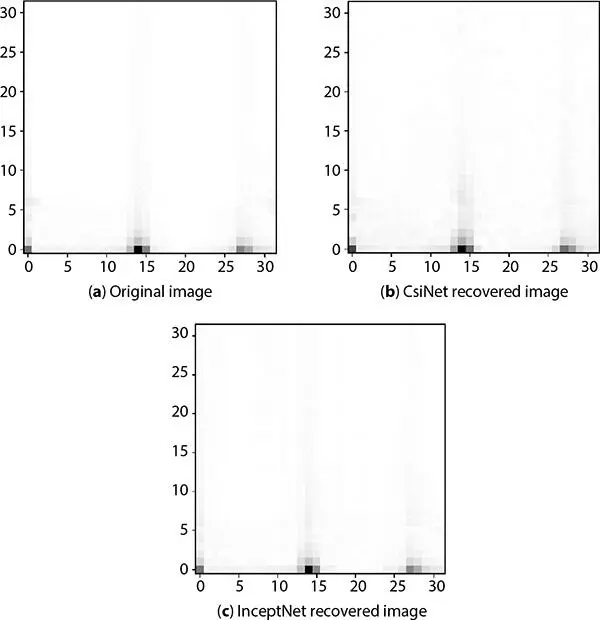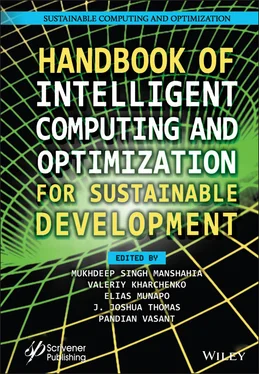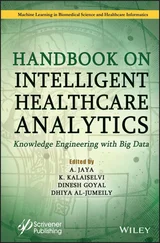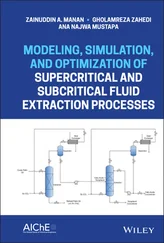(5.1) 
The CSI feedback serves as a beamforming vector. Consider h rn as the reconstructed channel vector of the n thsub-carrier and  as the original channel vector of the n thsubcarrier. Cosine similarity (ρ), which measures the quality of the beamforming vector can be given as
as the original channel vector of the n thsubcarrier. Cosine similarity (ρ), which measures the quality of the beamforming vector can be given as
(5.2) 
where Nc is the number of sub-carriers.
Figure 5.8shows the pseudo gray plots of the channel matrices. The recovered channel images for both CsiNet and InceptNet with CR = 1/4.

Figure 5.8 Pseudo gray plots of (a) original image (b) image recovered by CsiNet for CR= 1/4 (c) image recovered by InceptNet for CR= 1/4.
Table 5.2shows the comparative analysis between the already existing CsiNet and the proposed InceptNet. For low compression ratio of 1/4, the NMSE for InceptNet is −18.68 dB and for CsiNet −14.43 dB. The InceptNet gives a better recovery of the channel matrix as compared to the CsiNet. Even for a high compression ratio of 1/32, it is observed that NMSE is “−7.987” dB for InceptNet and “−5.32” for CsiNet. It is observed that the InceptNet outperforms the CsiNet in both NMSE and cosine similarity for all compression ratios. The InceptNet achieves better performance by training for only 100 epochs. The parallel inception blocks with different filter sizes help in better extraction of both high level and subtle features. The training time and quantitative results can be further improved by using the recently developed network architectures.
Table 5.2 Performance comparison analysis for 100 epochs between CsiNet and InceptNet.
| CR |
CsiNet |
InceptNet |
| NMSE (dB) |
Cosine Similarity |
NMSE (dB) |
Cosine Similarity |
| 1/4 |
−14.43 |
0.979 |
−18.68 |
0.989 |
| 1/8 |
−11.35 |
0.963 |
−13.014 |
0.973 |
| 1/16 |
−8.08 |
0.932 |
−9.357 |
0.941 |
| 1/32 |
−5.32 |
0.874 |
−7.987 |
0.918 |
To address the future upcoming challenges, a comprehensive review of existing literature in the context of ML techniques for emerging wireless communication systems has been investigate in this chapter. A detailed literature survey on AMC, RA, channel estimation and detection, and ML in mmWave communication has been presented. It has been found that ML/DL architectures have great potential to solve the emerging wireless communication problems with improved QoS which cannot be addressed by the conventional model driven techniques. The ML-based systems are generally complex but can be defined in a form of subsystems which are well principled and easy to understand. These systems are statistical in nature and can provide a better performance guarantee.
First case study proposes the TF imaging-based AMC using convolution network-based DL techniques. It is observed that spectrogram images of modulation techniques fed to CNN were able to capture the important nonlinear characteristics of encountered due to the channel imperfections. Hence, CNN was trained to provide a dynamic MF effect for each type of modulation schemes. Thus, it is observed that classification accuracy of TF image trained network was enhanced to 10% compared to baseline model [19]. Further using extended class type at the output layer of the network improved the SNR estimation capability.
In the case of CSI feedback in massive MIMO, the proposed InceptNet showed superior recovery of the channel matrix compared to the baseline network [20] measured in terms of NMSE and cosine similarity. The implementation results of Incept-Net show 4.25 dB lesser NMSE for a lower compression ratio of 1/4 and 2.66 dB for a higher compression ratio of 1/32 and 0.01 higher cosine similarity for both compression ratios compared to CsiNet. Lower NMSE shows a better recovery of the channel matrix and higher cosine similarity shows better beamforming gain from UE to BS. The proposed model is based on the concepts of the autoencoder model and inception block that contains parallel convolutional layers. The encoder compresses the channel matrix using the inception block. The decoder has parallel inception blocks that contain multiple parallel convolutional layers of varied resolutions. The use of these convolutional layers enhanced the learning capability of the network and resulted in better compression and recovery of the channel matrix.
5.5 Future Research Directions
Presently, 5G has been started to be deployed all over the world and formed the basis for an intelligent wireless network. Now, scientific community with industry stakeholders is working toward formalizing the roadmap for 6G. 6G network is considered to be transforming from “connected things” to “connected intelligence” [52]. Some of the key parameter indicators are as follows [35, 52]:
• Extreme data rates: Peak data rate up to 1 Tb/s for both indoor and outdoor.
• Enhanced spectral efficiency and coverage: Very broad frequency bands (e.g., 73–140 GHz and 1–3 THz) and advanced massive-MIMO technology.
• Enhanced energy efficiency: Very high energy efficiency, with the ability to support battery-free IoT devices.
• Ultra-low latency; less than 1 ms end-to-end latency.
• Ubiquitous always-on broadband global network coverage by integrating terrestrial wireless with satellite systems. A significant role played by unmanned aerial vehicles (UAVs) and low-Earth orbit (LEO) microsatellites to cover the deep fade and remotely inaccessible regions. This will also help in offloading the emergency network failure due to natural disaster and public gathering.
• Connected intelligence with ML capability: 5G forms the basis for the intelligent network, 6G will utilize the power of ML algorithms to enhance the efficiency of traditional model-based algorithms for signal processing.
Next-generation network to achieve required key parameters would be adding new radio interfaces like TeraHertz communication, intelligent reflecting surface, extremely large aperture arrays and joint radar communication for connecting to the heterogeneous hardware/software networks. Future radio access network would be based on what is called AI-enabled intelligent radio system. In AI-enabled radio system on the fly, the hardware and software up gradation would be expected based on DNN.
In this chapter, we have presented the ML/DL application for wireless communications systems. A brief overview of the ML algorithms applied to some of the emerging wireless technologies is explained. The key technologies of the 5G network were discussed in detail. The utility of the current DL architectures to train and predict the wireless signal classification is presented. We have also proposed a CNN model for AMC and compared with the existing model. The implementation results show that the proposed model outperforms the existing one. Further, modified InceptNet was proposed for CSI feedback for FDD massive MIMO system. The proposed InceptNet compared with the prevailing CsiNet attains superior results in terms of NMSE and cosine similarity. Both the models were tested for different compression ratios, and it is observed that for all the values of CR, InceptNet surpasses the CsiNet. The chapter briefly discussed the future research directions and critical enabling technologies for next-generation (5G and Beyond) wireless networks for ML applications.
Читать дальше


 as the original channel vector of the n thsubcarrier. Cosine similarity (ρ), which measures the quality of the beamforming vector can be given as
as the original channel vector of the n thsubcarrier. Cosine similarity (ρ), which measures the quality of the beamforming vector can be given as












